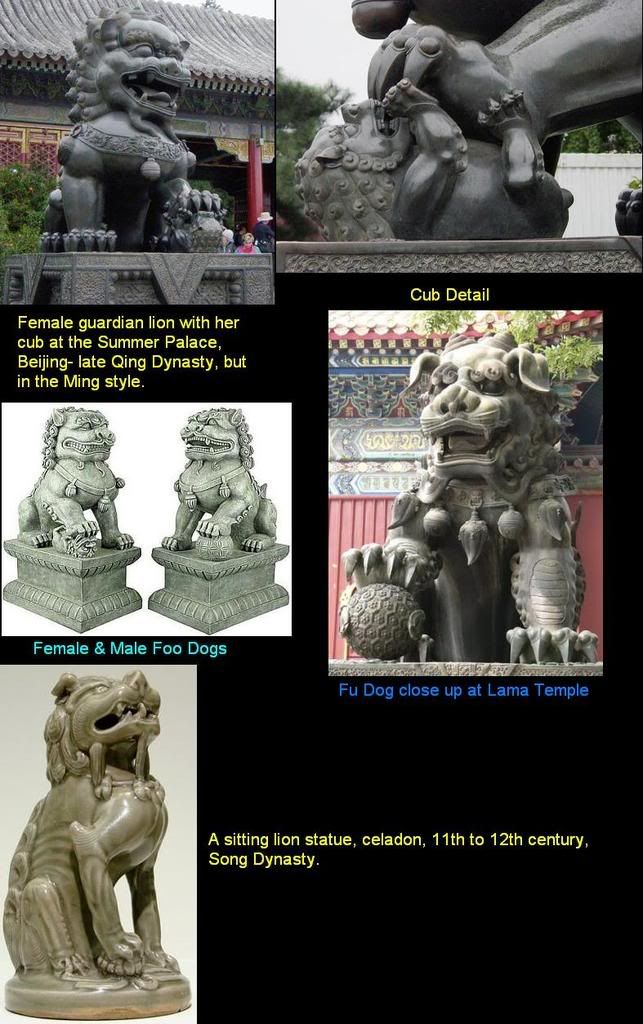Post by bluefedish on Feb 28, 2008 12:10:42 GMT -5
An imperial guardian lion, also called a "Fu Lion" or "Foo Dog" in chinese, is a common representation of the lion in pre-modern China, which is believed to have powerful mythic protective powers that has traditionally stood in front of Chinese Imperial palaces, temples, emperors' tombs, government offices, and the homes of government officials and the wealthy from the Han Dynasty (206BC - 220AD), until the end of the empire in 1911. In Greater Tibet, the guardian lion is known as a snow lion and similar to Japanese shishi. Imperial guardian lions are still common decorative and symbolic elements at the entrances to restaurants, hotels, and other structures. In Myanmar they are called Chinthe and gave their name to the World War II Chindit soldiers.
The lions are traditionally caved from decorative stone such as marble and granite or cast in bronze or iron. Because of the high cost of these materials and the labor required to produce them, private use of Imperial guardian lions was traditionally reserved for wealthy or elite familes. However, in modern times less expensive lions, mass produced in concrete and resin, have become available and thier use therefore no longer restricted to the elite.
The lions are generally present in pairs, with the female on the left and the male on the right. The male lion has his right paw on a ball, which represents the "flower of life", the female is essentially identical, but has a single cub under her left paw. Symbolically, the female fu dog protects those dwelling inside, while the male guards the structure. Sometimes the female has her mouth closed, and the male opened. This symbolizes the enunciation of the sacred word "om". However, Japanese adaption state that the male is inhaling, representing life, while the female exhales, representing death. Other styles have both lions with a single large pearl in each of their partially opened mouths. The pearl is carved so that it can roll about in the lion's mouth but sized just large enough so that it can never be removed.

Selected Sources:
en.wikipedia.org/wiki/Imperial_guardian_lions
picasaweb.google.com
bostonist.com
The lions are traditionally caved from decorative stone such as marble and granite or cast in bronze or iron. Because of the high cost of these materials and the labor required to produce them, private use of Imperial guardian lions was traditionally reserved for wealthy or elite familes. However, in modern times less expensive lions, mass produced in concrete and resin, have become available and thier use therefore no longer restricted to the elite.
The lions are generally present in pairs, with the female on the left and the male on the right. The male lion has his right paw on a ball, which represents the "flower of life", the female is essentially identical, but has a single cub under her left paw. Symbolically, the female fu dog protects those dwelling inside, while the male guards the structure. Sometimes the female has her mouth closed, and the male opened. This symbolizes the enunciation of the sacred word "om". However, Japanese adaption state that the male is inhaling, representing life, while the female exhales, representing death. Other styles have both lions with a single large pearl in each of their partially opened mouths. The pearl is carved so that it can roll about in the lion's mouth but sized just large enough so that it can never be removed.

Selected Sources:
en.wikipedia.org/wiki/Imperial_guardian_lions
picasaweb.google.com
bostonist.com



